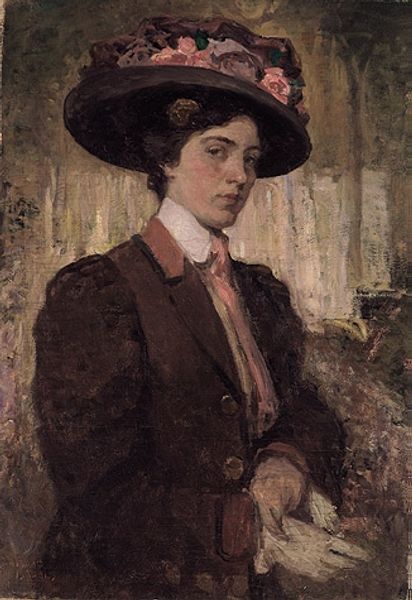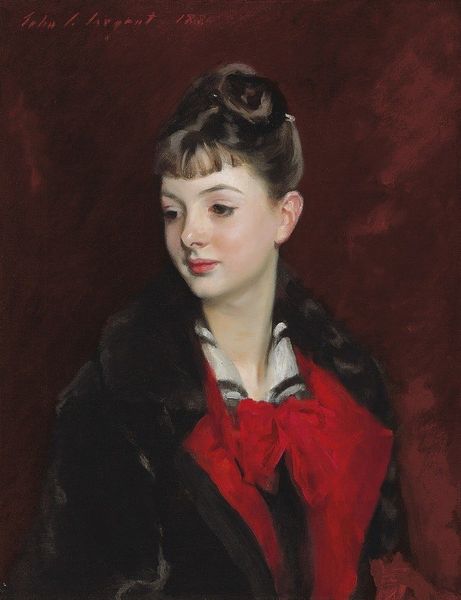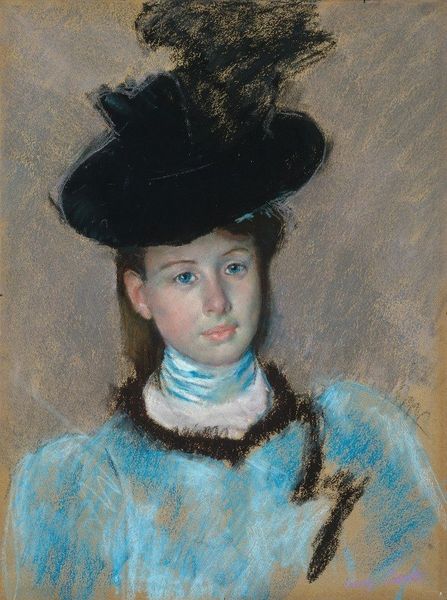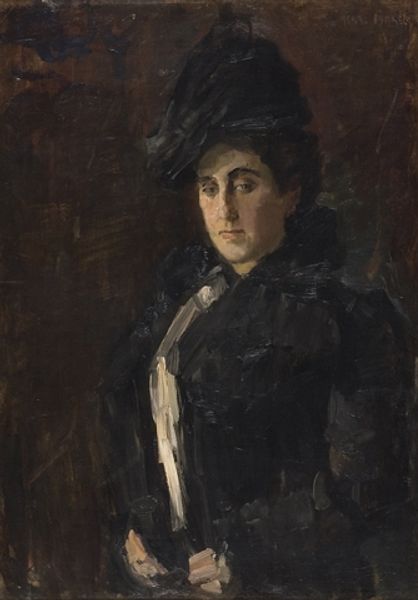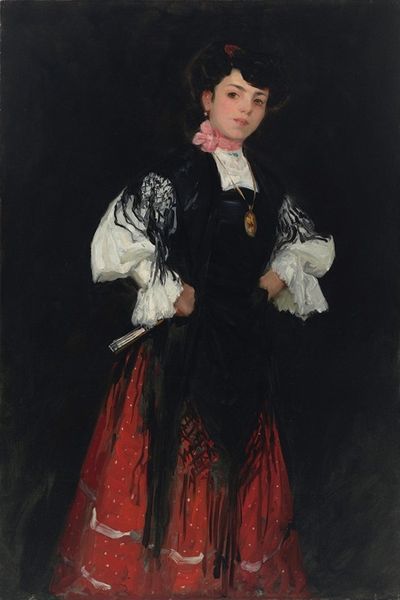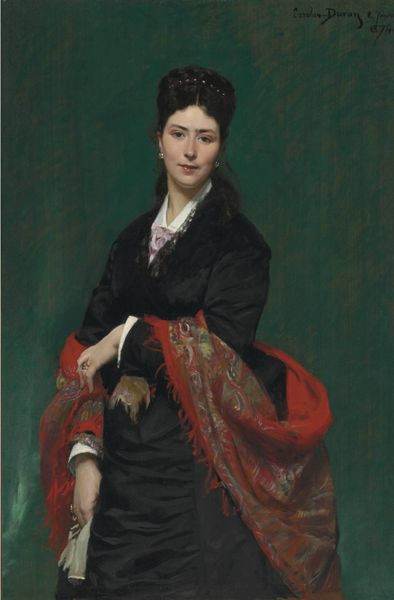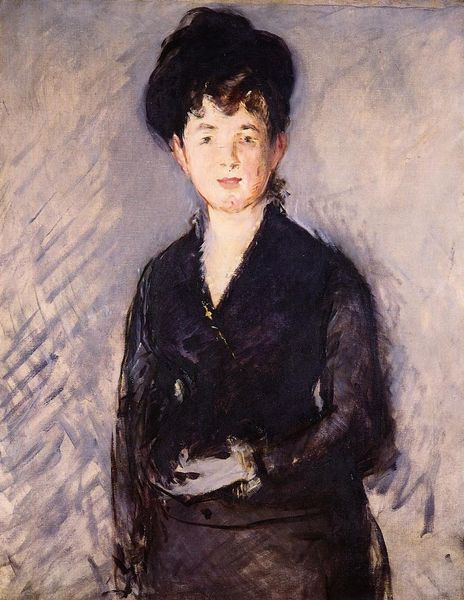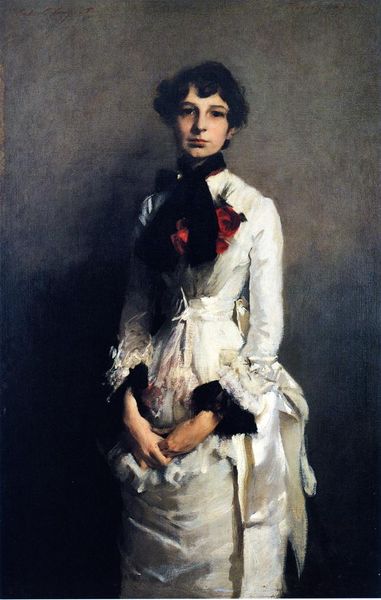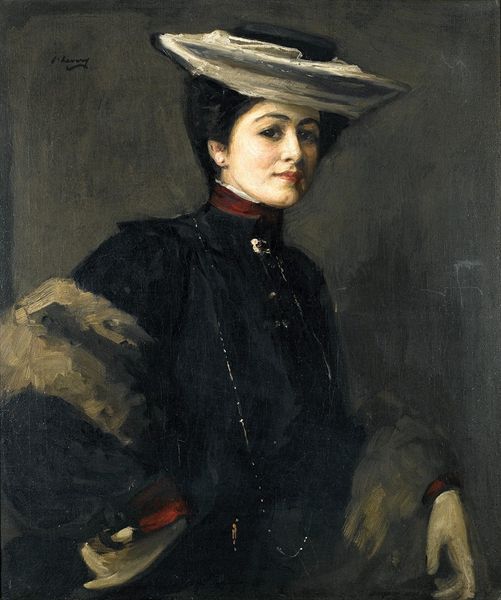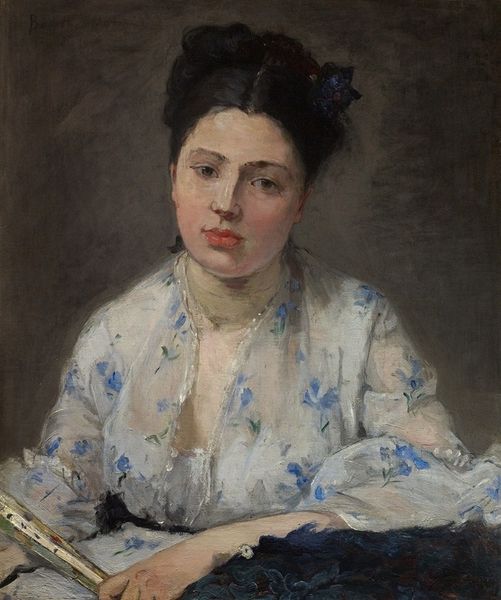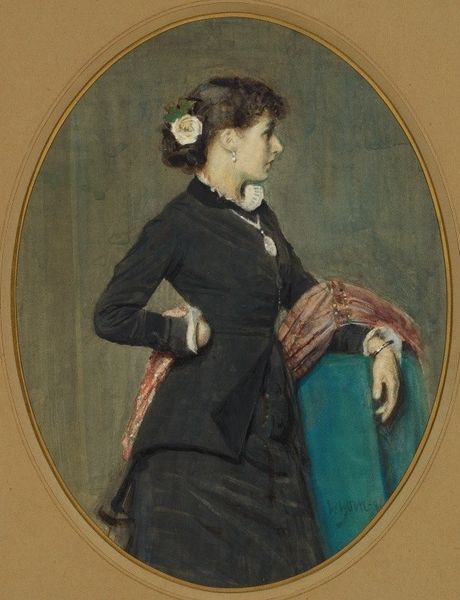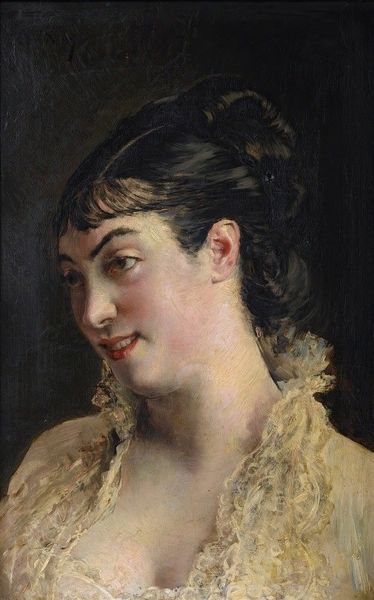
painting, oil-paint
#
portrait
#
painting
#
oil-paint
#
ashcan-school
#
modernism
#
realism
Copyright: Public domain
Curator: "Modestilla de Madrid," painted in 1906 by Robert Henri. It's an oil-on-canvas portrait, demonstrating a captivating example of the Ashcan School's realist approach to painting. Editor: There's a quiet drama to it. The deep black background really pushes her forward, doesn’t it? Her expression feels... both direct and slightly guarded. Curator: That dark background really accentuates the social dynamics embedded within this image. It emphasizes the artist's chosen subject - likely from the working class - set against a backdrop often reserved for the elite. This tension challenges traditional notions of portraiture and who gets to be seen. Editor: Yes! The limited palette almost throws her into relief; you get a visceral sense of immediacy. It's less about idealizing her and more about just... seeing her. I find that powerful. Her attire suggests that perhaps she worked as a servant, possibly as a seamstress. Curator: You are correct, her occupation, her position, is a crucial aspect. Henri was very interested in painting ordinary people engaged in the common activities. It highlights the materiality of the working class, capturing them with dignity, which diverges from other classical portraits from that period. Editor: There's a sort of humble beauty in it. That slightly crooked tie, her gaze… the brushstrokes feel deliberate, almost urgent. As if Henri had a limited amount of time to capture this ephemeral moment, to grant this woman immortality. Curator: What also strikes me is Henri’s loose handling of the medium. Thick, broad strokes define forms, rejecting academic polish in favor of an expressive directness that emphasizes his subject's realness. The brushwork emphasizes his speed but also speaks volumes about the materials that allowed such creative approaches at this time. Editor: Ultimately, the painting moves past pure portraiture, and it shows us a brief moment in the artist’s journey of observation, and our own journey through art history. Curator: Exactly! It allows for a deeper understanding of how artwork both documents and shapes perception within particular social circumstances and material practices.
Comments
No comments
Be the first to comment and join the conversation on the ultimate creative platform.
